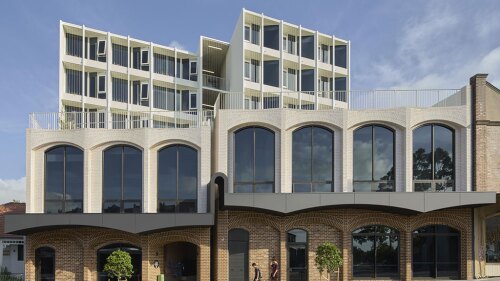The future looks a lot more female for residential developments that correlate with income and educational attainment.
While demographics are a powerful underlying driver of housing demand, demographic planning requires far more than a review of demographic reports that other developers are using, which, in the end, provide no competitive advantage. Even more challenging is when demographics are applied simply to justify the most profitable concepts—not to assess the realities behind future market demand. When read correctly, demographic data can predict demand. When read incorrectly by too many developers, they can lead to excess supply.
The evolution of development serving the baby boom generation— those born from 1946 to 1964— illustrates how the application of demographic data both positively and negatively shapes real estate supply and demand. The baby boom commenced when American GIs returned from World War II and birthrates shot up 30 percent in just one year—and stayed near that peak level for almost two decades.
Upon the urging of a Levitt son returning from the war, Levitt & Sons turned their custom homebuilding business into a low-margin mass producer of Levittowns starting in 1947, accommodating the booming birthrate. An explosion of suburbs across America soon ensued. Two decades later, as these children began entering adulthood, rental supply and demand skyrocketed. This was followed by an increase in the supply of and demand for starter homes. As baby boomers started entering their peak years of trade-up homebuying during the late 1980s, the word McMansion began appearing in the media in 1990.
As the generation’s wealth continued to expand, so did a dramatic expansion of demand for vacation homes and investment real estate.
Riding the baby boom age wave had been a developer gravy train for decades, but misinterpretation of demographic data was increasingly used to justify growth assumptions where underlying trends did not actually exist. One example from the 1990s: the golf industry banded together around a strategy to build “a course a day” to satisfy anticipated demand from the rapidly growing population of middle-aged baby boomers.
Fortunately (or unfortunately), there was an abundant supply of development capital to fuel the building binge. But none of the golf course development plans tempered the population growth with the shrinking play rate trends of baby boomers, compared to earlier generations, as they moved through that life stage. As a result, a shallow understanding of demographics not overlaid with other key indicators led to a dramatic increase in supply, without a corresponding increase in demand.
By digging deeper into real estate spending dynamics, consumer behavior, and earnings over time, we see a challenging future for baby boomer– driven product, despite population growth, as they move through their 50s and 60s. First of all, income growth has had almost as much to do with driving demand as birthrates have. Older baby boomers— now aged 55 and older—drove the first wave of demand for luxury trade-up homes, vacation residences, and investment real estate, and fueled hopes that the market would continue to grow at the same pace—an unfounded dream. Even within just the baby boomer cohort, the group following that first wave has lower income levels and less wealth.
On an inflation-adjusted basis, the average American household saw no income growth from 2000 to today. But the average masks the reality underneath: on average, inflation-adjusted income growth was negative for those currently under 55, while it grew for those over 55. In other words, not only did birthrates skyrocket with those at the front end of the baby boom, but so did their incomes.
Today’s market challenges are more than a cyclical decline triggered by the financial meltdown. We are seeing a structural shift that was already in the works well before the evaporation of Bear Stearns and AIG. The ongoing trend of declining incomes and birthrates among the generation following the baby boomers will affect the residential real estate market. Generation X—those born from 1965 to 1979— is a generation with an average of 15 percent fewer annual births than that of the baby boomers.
While the shift in birthrates will certainly affect the housing supply-and-demand equation, the problem is not simply a mismatch between the amount of baby boomer trade-up housing and the smaller generation now starting to enter its peak years for trading up: there is a significant mismatch in preferred housing and lot and neighborhood characteristics as well. Generation X is less willing to place economic value on the premium housing and neighborhood characteristics that previous buyers valued, a long-term fundamental generational shift already in the works before the market meltdown.
Despite generation X’s reduced population size, income, and willingness to pay for premium characteristics compared to the baby boomers, there is a greater willingness among generation X homebuyers to place an economic value on strong community characteristics. For this generation, community is more about the soft than the hard infrastructure.
The demographic shift ahead with perhaps the greatest upcoming impact on the housing market is the one least understood simply because their housing habits are only starting to emerge. Generation Y, sometimes called the echo boomers or millennials—young adults and teens born after 1980—have begun entering their peak years of renting and are about to enter their peak years for buying their first home. Some point to generation Y’s eventual movement into the housing market as a key driver for an upcoming real estate rebound. Their technological savvy is well known, pushing many real estate markets into various forms of social media and integration of technology into the home. But that’s only a portion of the story.
Perhaps an even bigger indicator of changes ahead stems from a key shift in generation Y’s gender dynamics. In 1972, when Title IX of the Educational Amendments kicked in, men were 1.5 times more likely than women to earn undergraduate and graduate degrees. Within the past decade of higher education for generation Y, however, women are now 1.5 times more likely to earn undergraduate and graduate degrees than men. This reverse gender dynamic plays out in incomes. Overall, women who work full time earn about 80 percent of what a man earns. However, when analyzing the incomes of single women in their 20s compared to single men in their 20s, women earn 105 percent of what their male counterparts earn in the average metropolitan market. That percentage approaches 120 in certain cities with a heavily knowledge-driven employment base.
But while incomes for generation Y women are increasing, that does not necessarily mean they are looking to spend more on housing. Even though young women are earning more, they are more value-conscious buyers than their male counterparts and are far more willing to make trade-offs in desired housing characteristics. But with their restrained spending they are far more likely to be savers as well, a key point now that the no-moneydown era is over. For housing developments that correlate with income and educational attainment, the future looks a lot more female, with single women already buying twice as many homes as single men, a ratio almost certain to increase given fundamental trends in income dynamics.
By the middle part of this century, the United States will grow from a current population of 300 million to 400 million. At first glance, this indicates that a lot more homes will need to be built. Yet, looking at just these numbers is likely to lead to oversupply than to markets materializing. Over the next two decades, the U.S. Census Bureau projects that the white population will grow by only 3 percent, due primarily to people living longer. A look at births shows that the white population growth rate is actually negative; all of America’s population growth is coming from non-Caucasians. The population of African Americans and Native Americans will grow, but the largest growth will come from a near doubling of the population of mixed-race Americans, Asian Americans, and Hispanics. While whites currently make up two-thirds of the U.S. population, the minority population is already the majority in four states—California, Hawaii, New Mexico, and Texas—as well as the District of Columbia, with seven more states on the verge of turning majority minority this decade. America’s youth are nearly there, with minorities constituting 45 percent.
But this population growth is not necessarily an indication of another gravy train ahead. The largest population growth is coming from a segment with an average income well below the mean. A fundamental question is this: How will housing demand shift with second- and third-generation immigrants? Communities with a rapidly growing rate of Hispanic college educational attainment are the ones most likely to see population increases driving the biggest jumps in homebuying demand. Developers who can anticipate and retool around these new realities are the ones who will thrive at the inflection points when the tide changes.
While whites currently make up two-thirds of the U.S. population, the minority population is already the majority in four states—California, Hawaii, New Mexico, and Texas—as well as the District of Columbia, with seven more states on the verge of turning majority minority this decade. America’s youth are nearly there, with minorities constituting 45 percent.




